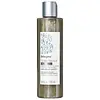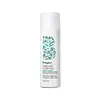What's inside
What's inside
 Key Ingredients
Key Ingredients

 Benefits
Benefits

 Concerns
Concerns

 Ingredients Side-by-side
Ingredients Side-by-side

Salicylic Acid 3%
MaskingWater
Skin ConditioningSodium Methyl Cocoyl Taurate
CleansingCocamidopropyl Betaine
CleansingGlycerin
HumectantSodium Citrate
BufferingGlycol Distearate
EmollientMelaleuca Alternifolia Leaf Oil
AntioxidantSodium PCA
HumectantLactic Acid
BufferingMenthyl Lactate
MaskingSodium Gluconate
Skin ConditioningPanthenol
Skin ConditioningMentha Piperita Oil
MaskingCaramel
Cosmetic ColorantMaltodextrin
AbsorbentHydrolyzed Gardenia Florida Extract
AntioxidantCharcoal Powder
AbrasiveCocos Nucifera Oil
MaskingBiotin
AntiseborrhoeicHyaluronic Acid
HumectantSalicylic Acid 3%, Water, Sodium Methyl Cocoyl Taurate, Cocamidopropyl Betaine, Glycerin, Sodium Citrate, Glycol Distearate, Melaleuca Alternifolia Leaf Oil, Sodium PCA, Lactic Acid, Menthyl Lactate, Sodium Gluconate, Panthenol, Mentha Piperita Oil, Caramel, Maltodextrin, Hydrolyzed Gardenia Florida Extract, Charcoal Powder, Cocos Nucifera Oil, Biotin, Hyaluronic Acid
Water
Skin ConditioningSodium Cocoyl Isethionate
CleansingLauramidopropyl Betaine
CleansingGlycerin
HumectantSodium C14-16 Olefin Sulfonate
CleansingCocamidopropyl Hydroxysultaine
CleansingCoffea Arabica Seed Oil
MaskingCopper Tripeptide-34
Skin ConditioningPanax Ginseng Root Extract
EmollientBiotin
AntiseborrhoeicCoconut Acid
CleansingLeuconostoc/Radish Root Ferment Filtrate
AntimicrobialSodium Methyl Cocoyl Taurate
CleansingSodium Isethionate
CleansingCitric Acid
BufferingAloe Barbadensis Leaf Juice
Skin ConditioningCaffeine
Skin ConditioningPropanediol
SolventLindera Strychnifolia Root Extract
Skin ConditioningTocopheryl Acetate
AntioxidantUbiquinone
AntioxidantGlycine
BufferingLarix Europaea Wood Extract
HumectantSodium Metabisulfite
AntioxidantCamellia Sinensis Leaf Extract
AntimicrobialZinc Chloride
AntimicrobialSodium Hydroxide
BufferingParfum
MaskingCaprylhydroxamic Acid
Benzyl Alcohol
PerfumingWater, Sodium Cocoyl Isethionate, Lauramidopropyl Betaine, Glycerin, Sodium C14-16 Olefin Sulfonate, Cocamidopropyl Hydroxysultaine, Coffea Arabica Seed Oil, Copper Tripeptide-34, Panax Ginseng Root Extract, Biotin, Coconut Acid, Leuconostoc/Radish Root Ferment Filtrate, Sodium Methyl Cocoyl Taurate, Sodium Isethionate, Citric Acid, Aloe Barbadensis Leaf Juice, Caffeine, Propanediol, Lindera Strychnifolia Root Extract, Tocopheryl Acetate, Ubiquinone, Glycine, Larix Europaea Wood Extract, Sodium Metabisulfite, Camellia Sinensis Leaf Extract, Zinc Chloride, Sodium Hydroxide, Parfum, Caprylhydroxamic Acid, Benzyl Alcohol
Ingredients Explained
These ingredients are found in both products.
Ingredients higher up in an ingredient list are typically present in a larger amount.
Biotin is a B vitamin that is naturally produced by our bodies. It is also called Vitamin H.
Our bodies use biotin in the metabolism process. It also helps our bodies use enzymes and move nutrients around. A biotin deficiency can lead to brittle hair and nails.
More research is needed on applying biotin topically. However, taking biotin orally has been shown to help nourish the skin, hair, and nails. They play a role in forming skin-hydrating fatty acids.
Biotin is water-soluble. It can be found in foods such as fish, eggs, dairy, nuts, and meat. Vitamin H stands for "haar" and "haut". These are the German words for hair and skin.
Learn more about BiotinGlycerin is already naturally found in your skin. It helps moisturize and protect your skin.
A study from 2016 found glycerin to be more effective as a humectant than AHAs and hyaluronic acid.
As a humectant, it helps the skin stay hydrated by pulling moisture to your skin. The low molecular weight of glycerin allows it to pull moisture into the deeper layers of your skin.
Hydrated skin improves your skin barrier; Your skin barrier helps protect against irritants and bacteria.
Glycerin has also been found to have antimicrobial and antiviral properties. Due to these properties, glycerin is often used in wound and burn treatments.
In cosmetics, glycerin is usually derived from plants such as soybean or palm. However, it can also be sourced from animals, such as tallow or animal fat.
This ingredient is organic, colorless, odorless, and non-toxic.
Glycerin is the name for this ingredient in American English. British English uses Glycerol/Glycerine.
Learn more about GlycerinThis gentle cleansing and foaming ingredient is known for leaving a smooth feeling in skin and hair. It is made using coconut oil.
According to the manufacturer, it is soluble in water and has resistance to hard water, acid, and alkali.
Due to its coconut base, it may not be Malassezia folliculitis safe.
Learn more about Sodium Methyl Cocoyl TaurateWater. It's the most common cosmetic ingredient of all. You'll usually see it at the top of ingredient lists, meaning that it makes up the largest part of the product.
So why is it so popular? Water most often acts as a solvent - this means that it helps dissolve other ingredients into the formulation.
You'll also recognize water as that liquid we all need to stay alive. If you see this, drink a glass of water. Stay hydrated!
Learn more about Water